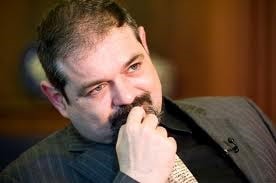
Title: The transition to synchronization of networked systems
Abstract: With the only help of eigenvalues and eigenvectors of the graph’s Laplacian matrix, we show that the transition to synchronization of a generic networked dynamical system can be entirely predicted and completely characterized.In particular, the transition is made of a well-defined sequence of events, each of which corresponds to either the nucleation of one(or several) cluster(s) of synchronized nodes or to the merging of multiple synchronized clusters into a single one.The network’s nodes involved in each of such clusters can be exactly identified, and the value of the coupling strength at which such events are taking place (and therefore, the complete events’ sequence) can be rigorously ascertained.We moreover clarify that the synchronized clusters are formed by those nodes which are indistinguishable at the eyes of any other network’s vertex, and as such they receive the same dynamical input from the rest of the network.Therefore, such clusters are more general subsets of nodes than those defined by the graph’s symmetry orbits, and at the same time more specific than those described by the network’s equitable partitions.Finally, we present large scale simulations which show how accurate our predictions are in describing the synchronization transition of both synthetic and real-world large size networks, and we even report that the observed sequence of clusters is preserved in heterogeneous networks made of slightly non identical systems.
Bio: Professor Stefano Boccaletti received the PhD in Physics at the University of Florence on 1995, and a PhD honoris causa at the University Rey Juan Carlos of Madrid on 2015. He was Scientific Attache’ of the Italian Embassy in Israel during the years 2007-2011 and 2014-2018. He is currently Director of Research at the Institute of Complex Systems of the Italian CNR, in Florence. His major scientific interests are i) pattern formation and competition in extended media, ii) control and synchronization of chaos, and iii) the structure and dynamics of complex networks. He is Editor in Chief of the Journal “Chaos, Solitons and Fractals” (Elsevier) from 2013, and member of the Academia Europaea since 2016. He was elected member of the Florence City Council from 1995 to 1999. Boccaletti has published 402 papers in peer-reviewed international Journals, which received more than 36,200 citations (Google Sholar). His h factor is 71 and his i-10 index is 232. With more than 12,300 citations, the monograph ¨Complex Networks: Structure and Dynamics¨, published by Boccaletti in Physics Reports on 2006 converted into the most quoted paper ever appeared in the Annals of that Journal.